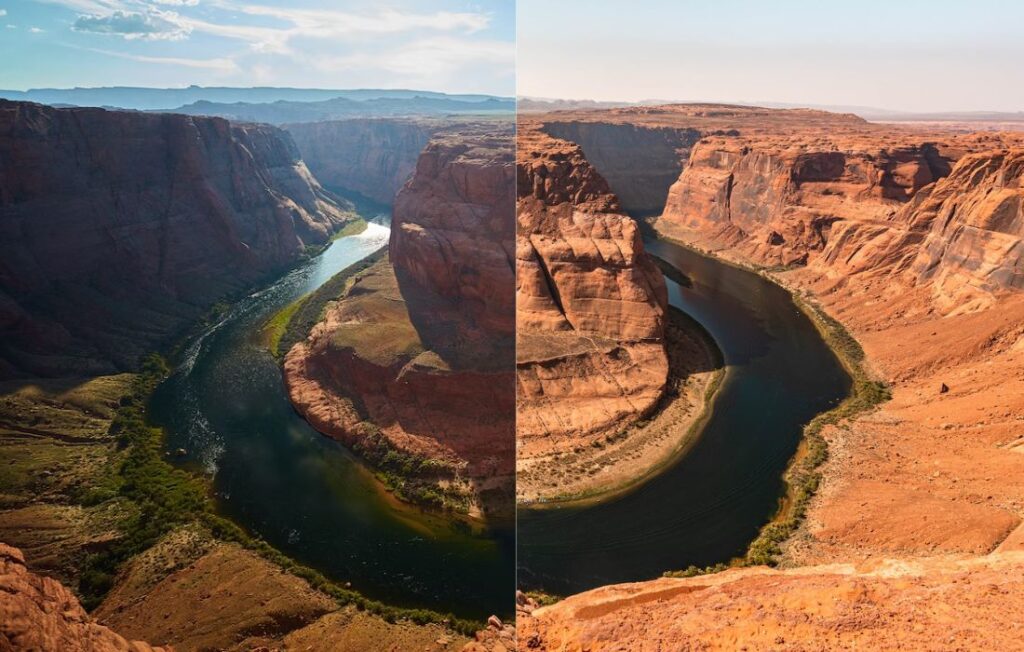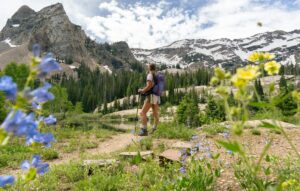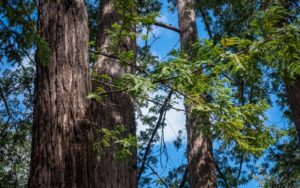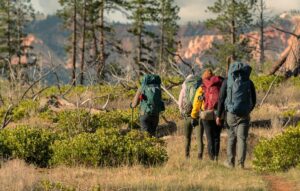A hotter, drier future is already here...and now there's less water to go around.
What are the best places to use water for the betterment of human society? This is the question that’s facing communities across the United States, but specifically the seven states (plus Mexico) that rely on the Colorado River as a primary water source. The Colorado River is drying up, and it’s happening rapidly. Tens of millions of people rely on a water source that, very soon, will not be able to meet the output we’re demanding of it—something scientists have been warning about for years.
So how did we get here? What’s being done to course-correct? And how can we make sure we’re protecting our critical water sources now and for generations to come?
Let’s talk about it.
The Problem
The Colorado River basin has been in a multi-year drought since 2000. While much of this region relies on melting snowpack to replenish its water reserves, a lack of precipitation year-round has resulted in levels low enough that even the record snowfall of 2022 (up roughly 180% from previous years) isn’t enough to replenish it. According to Brad Udall, a senior water and climate scientist at Colorado State University Colorado Water Center, the region would need six consecutive years of this level of snowfall to refill the reservoirs. Bottom line: warmer and drier means less snow and less groundwater.
Lakes Powell and Mead, both manmade reservoirs along the Colorado River, are currently resting between 20% and 30% capacity. The last time levels were this low was when the lakes were being filled for the first time.
The reservoirs are so low, in fact, that it’s threatening the ability to create hydropower altogether. The Lake Mead reservoir is created by the Hoover Dam, a hydropower plant that supplies water and power to 1.5 million people in several of the surrounding states, 29 federally recognized tribes, and parts of Mexico. If the water elevation of Lake Mead (which currently stands at just above 1,000 feet) drops below 950 feet, the Hoover Dam will be unable to produce hydroelectricity.
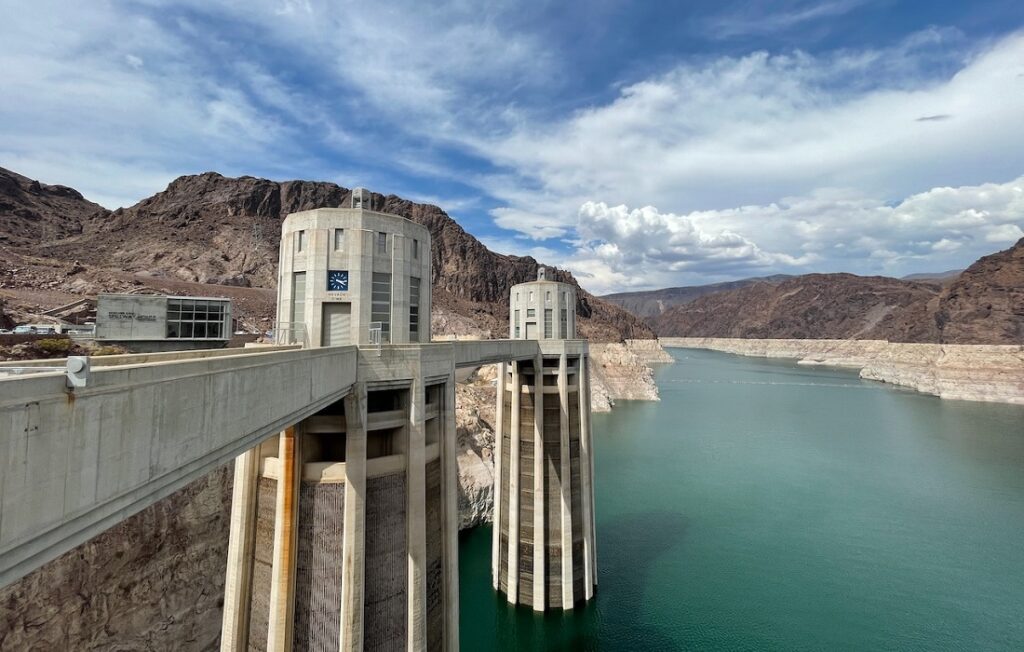
And it’s not just power, the impacts of these low water levels are being felt across communities and industries alike. Significant water limitations are now being put into place that restrict how farmers, homeowners, businesses, and entire communities are able to use water. In June 2022, the U.S. federal government issued a warning to Colorado River basin states: reduce water consumption by 2 to 4 million acre-feet, or the federal government will step in.
How Did We Get Here?
So far, we’ve talked about the overall decline in both snowpack and groundwater; the human overconsumption of water without the environment’s ability to naturally replenish it. But how are we using all of this water? Where is the majority of it going? To our homes? To fill our swimming pools? To flush our toilets?
Nope—it’s to water our crops. Agriculture, and specifically irrigation, accounts for most of the water used by western U.S. states. In fact, water demand from the states out west accounts for 81% of the total U.S. water demand. But why?
Not only is it the part of the country where the weather is the driest, it also accounts for some of the most fruitful agricultural lands in America. California, in particular, has a year-round growing season and produces 90% of winter crops in the U.S. So, it’s probably no surprise to learn that, of all the western states, their water demand is the highest. (It certainly begs the question: why are we growing our crops in a region that’s so dry and requires so much more water? Wouldn’t it be more efficient to grow our crops locally?)
In 1922, the Colorado River basin states (seven in total) and Mexico first officially divided up the river’s water supply. This agreement was known as the Colorado River Compact, and it’s what has divvied up freshwater resources for the (in today’s numbers) 40 million people who live in this region and rely on the river and its tributaries. However, climate change and a rapidly warming world has increased the impacts of the lengthy drought by at least 30%, rendering the former agreement insufficient for identifying water usage priority and allocation.
A Delayed Solution
The Colorado River Interim Guidelines were created in 2007 in response to the river’s deteriorating storage levels, but even then, the full length and impact of the drought was not anticipated. Despite repeated warnings from scientists, tribal leaders, environmentalists, and local community members, major legislative action was not taken again until August 16, 2021, when the Bureau of Reclamation announced an official water shortage declaration for the Lower Basin regions. This limited Arizona, Nevada, and Mexico on the amount of water they could siphon from the Colorado River, meaning less water for cities and farmers alike.
Water shortages, even those implemented on an official basis (like with legislative measures) have a major impact on how people live, both habitually and economically. Less water for farmers means fewer crops, fewer animals, and less income—a major issue for many agriculturists across America who are already struggling to break even.
And still, this declaration was only a bandage on a much deeper wound. Water levels continued to drop, threatening communities throughout the western United States. As a result, in 2022, the federal government decided to step in and require action from the Colorado River Basin states. In January 2023, six of the seven states came to a collective agreement; an approach that will cut 1.5 million acre-feet of water from use. This proposition would require large cuts from California, as it’s the largest user of the river’s freshwater resources. Unfortunately, California rejected the agreement, claiming it goes against the region’s long-established system of water rights.
So where are we now? Why did we wait so long to implement change? And who is being overlooked in the process?
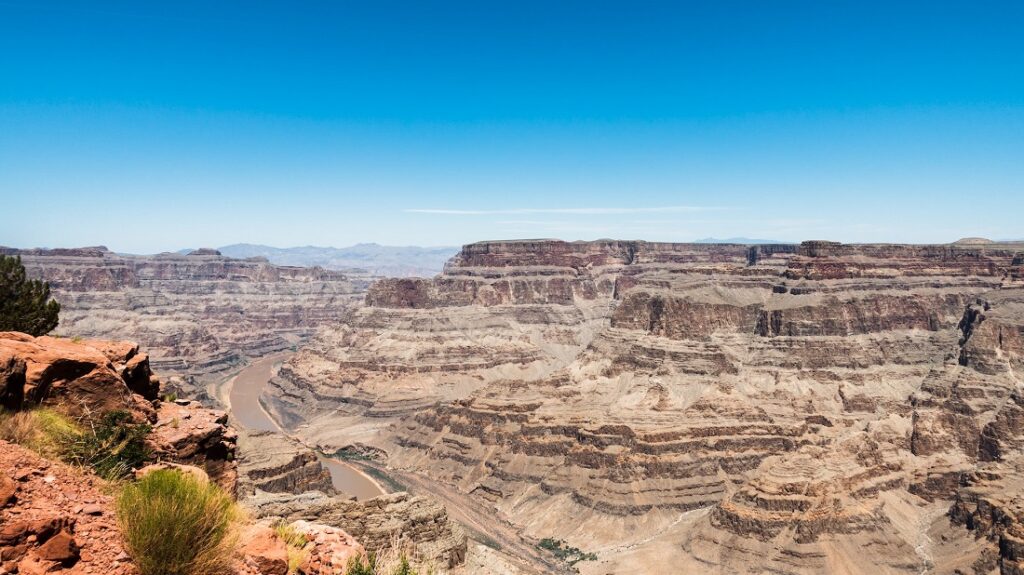
A Lack of Water Security for Tribal Nations
Unless the seven Colorado River Basin states come to an agreement in the next month, we can expect the federal government to get involved in the usage and distribution of the Colorado River’s water. Until then, we’re in a state of limbo—something that hasn’t really changed for decades.
But WHY? Why have no measurements been put into place over the past 100 years to preserve the use of the Colorado River?
Well, for starters, it’s difficult to get states to agree. This is by no means an excuse, but it is an explanation for why the political action the river so desperately needs has been so incredibly halted. Each state is looking out for their own people and interests and, as a result, can’t seem to come to one universal action plan. Inaction can also be easier. The U.S. has a history of ignoring pressing, much-needed change in order to “stick to the status quo.” In truth, reasons “why” abound, but we now know that we need to act now or risk a point of no return. And everyone needs to be included in (and benefit from) the solution.
Today, many Indigenous communities are being overlooked by water solutions and are having to fight for their rights to the Colorado River water. Remember that Colorado River Compact from 1922? It didn’t include any water shares for tribes, despite the fact that hundreds of miles of the Colorado River borders dozens of tribal nation lands. While, on paper, everyone seems to agree that historical treaties give tribal nations the rights to the river water, the problem is in securing this water. The U.S. government claims it has no responsibility to secure the water promised to the affected tribes and, as a result, these water rights have not been prioritized or represented by local and/or state governments dividing and allocating Colorado River water usage.
Today, the Navajo Nation are at the forefront of this conversation due to their Supreme Court battle with the state of Arizona over river water access. To date, the Supreme Court has not come to a conclusion about this case.
Infrastructure, Agriculture, and Making Change
So, where do we go from here?
If we’re going to make sufficient change—enough to protect the Colorado River waters for future generations, and enough to prevent permanent damage to this critical ecosystem and the communities that rely on it—that change needs to come at a scale that fits the problem. Adapting our approach to agriculture will be a critical first step.
Currently, 80% of the water usage of the Colorado River goes to agriculture; 15% of which is dedicated solely to watering our crops. By adopting regenerative agriculture practices and making smarter choices about where, when, and how we’re planting our food, we can begin to make a significant change—including the reduced use of water. Other water conservation solutions include:
- Drip irrigation
- Microirrigation
- Improve soil health (to increase water retention)
- Plant drought-resistant crops
Municipal water conservation and reuse is also estimated to be able to save up to 2 million acre-feet of freshwater. Improvements in homes and businesses can include things like adding greywater systems, incorporating water-loss management programs, transitioning to high efficiency sinks, toilets, and showerheads, minimizing day-to-day water usage, and more. In fact, these high-efficiency innovations and systems are predicted to be able to save another 1 million acre-feet.
The truth is we have the solutions now; there is no pressing need to rely on future technologies. It’s about putting in the time and money to implement them before it’s too late.
Luckily, there is some good news on that front. This May (2023), three states—California, Nevada, and Arizona—all signed an agreement to take 13% less water from the Colorado River basin, with an aim of putting less strain on the already drying watershed. These three states utilize the majority of the river’s water and, while this agreement marks the first positive action taken to preserve the river’s waters, it is still less than the amount scientists believe to be necessary to maintain the river system. It’s also important to note that the people who are most likely to experience the consequences of less water are farmers and individual homeowners.
While by no means a perfect solution, this is certainly a step in the right direction for environmental sustainability in the U.S.
